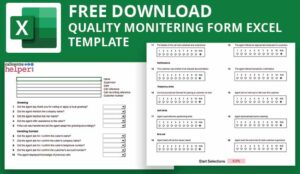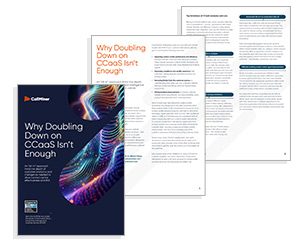Call centre monitoring is one of the most effective ways call centres can improve their customer service; it gives managers the opportunity to watch (or rather listen) to their agents in action.
By monitoring what agents say during interactions, managers can easily identify problems within their teams, maintain quality standards and compliance, improve the customer experience, and improve overall call centre performance. However, listening in on a few calls here and there isn’t going to do any good for your agents, your customers, or your call centre at large.
Here are three ways you can improve your call centre monitoring practices:
1. Analyse 100% of calls
Let’s say call centre managers were able to manually review 5 random calls per agent each month for quality assurance and training purposes. Depending on the call volume, that means only a few percent of calls are actually used for coaching and training, which is nowhere near a statistically significant sample size.
How can a manager effectively monitor their call centre when they don’t have trustworthy data to pull actionable insights from?
Call quality monitoring is all about changing agent behaviour, and managers need to understand how agents act day-in and day-out, not just basing their entire review and training plan on 1 or 2 calls. Instead of manually reviewing a small sample of calls, managers can improve call centre monitoring with a speech analytics system where 100% of calls are automatically recorded AND calls are monitored in real time.
Now you are getting a 360-degree view of your call centre and can trust your action items are based on sound data, not just casual observations.
2. Align your customers’ needs with your own business objectives
Make sure your call centre monitoring goals accurately represent your customers’ expectations and aren’t just about what numbers you wish to see from your agents. If you’re not monitoring for and measuring what customers value, then you’re just wasting your time and tasking your agents to hit certain goals that could actually undermine the customer experience.
For instance, Average Handling Time (AHT) is a commonly reviewed metric because the faster an agent wraps up an interaction, the faster they can move onto the next call, thereby shortening call wait times. But just because an agent gets through their calls quickly that doesn’t mean they are getting through them effectively. An agent primarily obsessed with speed might not fully resolve the issue, prompting the customer to call back or try another service channel. Vice versa, an agent might spend 10 hours on the line with one customer but that doesn’t automatically mean they are a terrible employee even though they failed to meet your call centre’s AHT goals.
Improving your agents’ first call resolution rate (FCR) and tracking that metric is a way of measuring your employees’ efficiency and driving customer satisfaction.
It’s important to remember that you can’t evaluate your agents in a vacuum.
3. Involve agents when developing the scorecards/evaluation forms used during the monitoring process
When your whole team understands what you’re looking for during the monitoring process you have a much better chance of adjusting behaviour as people are aware of how they are being evaluated.
For instance, define what constitutes a “quality” interaction and the subcategories that are being scored.
- How important is script adherence?
- How important is handling time?
- Will agents be judged on how well they handle escalating calls with frustrated customers?
Providing examples that demonstrate excellent, average or poor quality of the behaviours being measured gives your agents a solid base to work from and outlines expectations of performance. And since you are now analysing 100% of calls, they know that each interaction has to be the best it can. They can’t just phone it in (pardon the pun) most days and put on their best behaviour when they know they are being monitored.
Having a call centre monitoring procedure in place is half the battle, but if you want to get real actionable insights and make real performance changes, it’s imperative that call centres focus on improving their monitoring practices as much as they can. The more trustworthy data you can collect, the more positive impact you can have.
This blog post has been re-published by kind permission of CallMiner – View the Original Article
For more information about CallMiner - visit the CallMiner Website
Call Centre Helper is not responsible for the content of these guest blog posts. The opinions expressed in this article are those of the author, and do not necessarily reflect those of Call Centre Helper.
Author: CallMiner
Published On: 7th Feb 2019 - Last modified: 12th Feb 2019
Read more about - Guest Blogs, CallMiner






 CallMiner is the leading cloud-based customer interaction analytics solution for extracting business intelligence and improving agent performance across all contact channels.
CallMiner is the leading cloud-based customer interaction analytics solution for extracting business intelligence and improving agent performance across all contact channels. 












